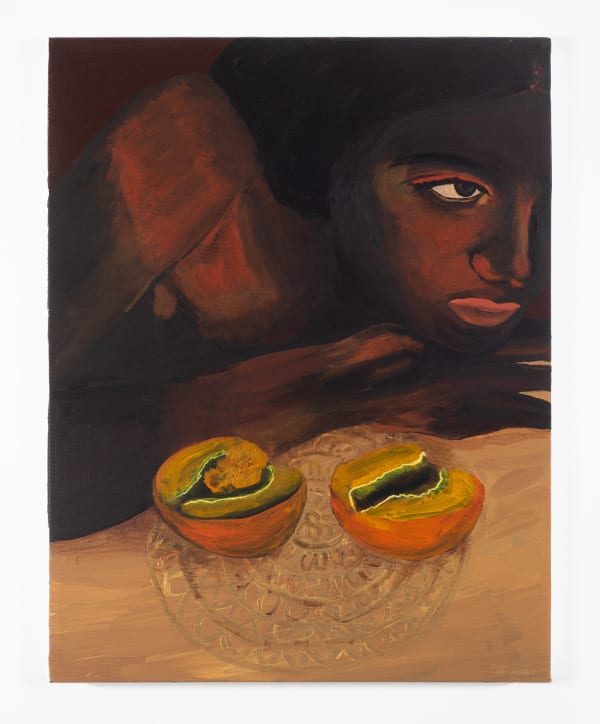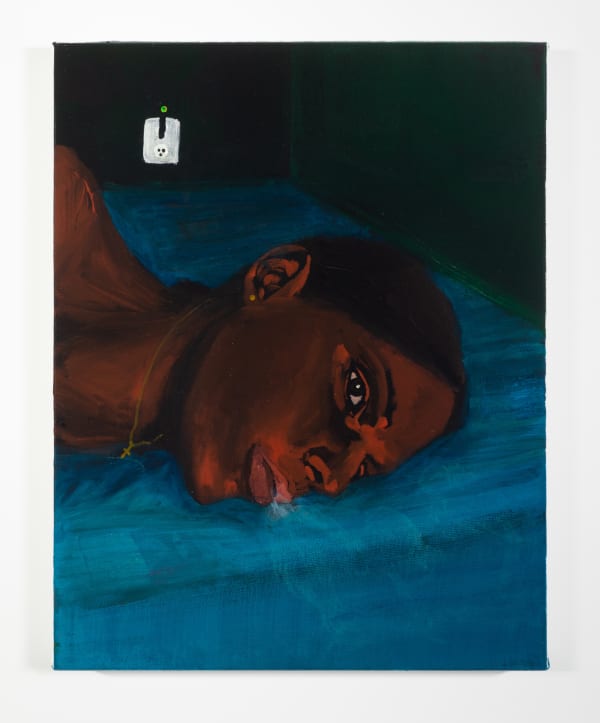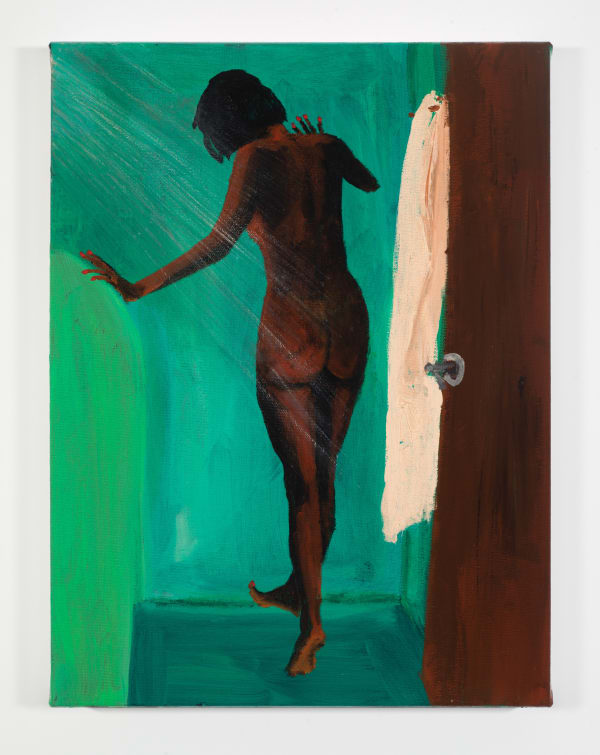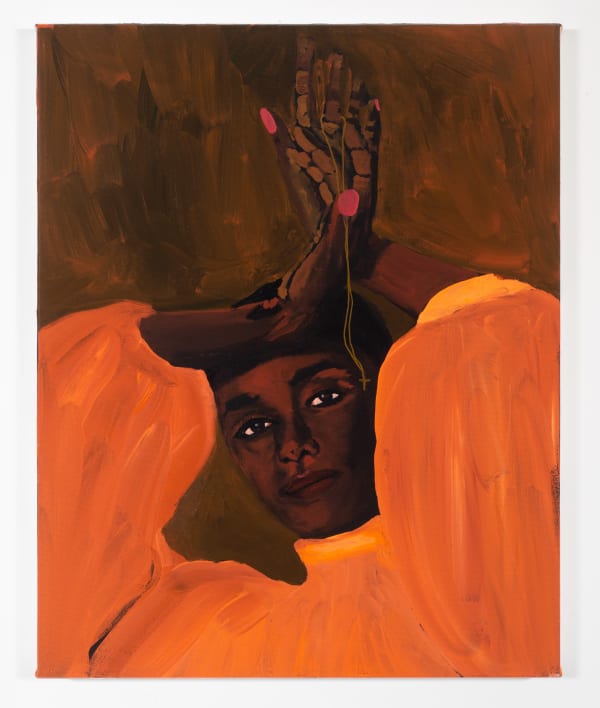Danielle Mckinney: Saw my Shadow
after Easter Sunday
It takes every hour to spell
What I would not see
What I saw in triptych trifold or saw in flight
The tourniquet of LLLLL: languid, lavish, luxury, liminal, latent, left
It takes every hour to sound out the sequel
Sound cuts the sequel, lets in the red beets
Hands them to the arriving evening
Lessens the static
Rests on what we relished, indexed
Or my / or my / or my /
Inside of Danielle Mckinney’s Saw My Shadow lives all the insular, reflexive, double seeing— all the ways we train our sight, untrain it, and then train it again on something in the distance. Or maybe there’s nothing in the distance, nothing to see at least. It is just a place to rest our eyes. So rarely do any figures in Mckinney’s work meet the viewer’s gaze. These women see what they see— their gaze is fixed at an ‘over there’ and the vantage is theirs alone to hold. In these paintings, the figures are often just with themselves, not adrift, but lost in their own lush solitude. The solitude remains uninterrupted. All the while there is a soft focus and a commitment to keeping it that way. The long, slow focus splays time and diminishes any possible urgency. The figures’ gaze rests just beyond us and in their own way, they each seems to say I take my time. The sightline creates an enclosure in thirds between the figure, the time, and their shadow.
And there is no urgency here. The profusion of color slows us down and invites us to linger. Sumptuous, vivid color becomes sumptuous small luxuries in Mckinney’s work — the exhale and halo of a smoke ring; the world inside a book. These paintings haunt the space at the magnetic edge of leisure and listlessness. All the while, though, the viewer knows the bounds of the invitation— we are invited to observe, to look without the expectation that the figure will look back. Whether or not we look, though, the figures will keep on existing. In some paintings, the women shield their eyes, maybe as a reminder that their reciprocal sight is not a given. The shielded eyes create a veil, which is met by more veil. We catch a glimmer, a moment, a shadow.
‘Saw’ is to have seen in the past, having had a moment to notice, sit with, be with. There is an insularity in ‘saw’, in ‘my’, in ‘shadow’. No one else can ever know what you saw when you saw your shadow. It is your own seeing and it stays your own. In each of these works, the sight stays with the figure. We can come close to seeing what they saw, but we can only really know if they tell us.
- Text by Asiya Wadud
-

Danielle McKinney in conversation with Alison Gingeras
Mousse Magazine, May 7, 2021 -

EXPERIENCE THE POETIC SOLITUDE IN DANIELLE MCKINNEY’S BODY OF WORK
Cristina Samper, Art of Choice, April 29, 2021 -

Editors' Picks | Artnet
Katie White, Artnet, April 19, 2021 -

Elephant’s Pick of the Artists Making a Mark in April
Charlotte Jansen, Elephant Magazine, April 12, 2021 -

Saw My Shadow: New Work by Danielle Mckinney
Evan Pricco, Juxtapoz, April 12, 2021











